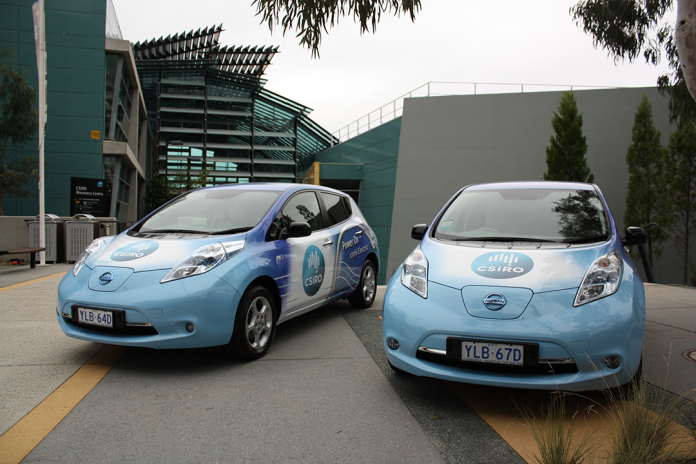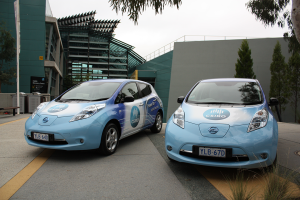
The CSIRO has introduced the first two of 10 petrol-free, electric cars, and two additional electric bikes to its national fleet, making another great leap towards achieving the goal of reducing its carbon footprint.

Image credit: csiro.au
CSIRO General Manager, Building and Infrastructure Services, Mark Wallis said the 100% electric vehicles have been delivered to staff at CSIRO’s Discovery Centre at Black Mountain, Canberra.
“We are rolling out these new electric cars across seven of our sites to enable petrol-free motoring within CSIRO’s pool of fleet vehicles,” Mr Wallis said.
“With the addition of solar PV panels at our sites, we aim to generate more than enough renewable energy to charge and run the cars, making them emission free. This is certainly a greener alternative when you consider that the manufacturers say: ‘parts of the interior and bodywork are made from recycled water bottles, plastic bags, old car parts and home appliances’.”
He said CSIRO locations in Melbourne, Brisbane, Hobart, Perth, Townsville and Newcastle were the next facilities that will take delivery of the new electric cars in the near future.
“The cars and electric bikes are the latest in a raft of initiatives to lower emissions, reduce waste and improve the sustainability of operations across CSIRO,” Mr Wallis said.
“As our scientists continue to lead the way in many aspects of alternative energy, emissions and waste reduction, and water and energy efficiency technology – we also want to be an organisation that puts those same things into action across our sites and operations. The money saved or earned can be reinvested into national science priorities. The money saved or earned can be reinvested into national science priorities.”
He said the addition of the new electric cars to its fleet builds on CSIRO’s other recent sustainability initiatives and benefits, which include:
- The introduction of 36 electric/petrol hybrid cars to the CSIRO Fleet in 2015 to replace petrol-only vehicles
- A 2300 tonne carbon dioxide equivalent (tC02e) emissions reduction and $176,000 estimated cost saving from a nationwide campaign to close laboratory fume hoods during ‘downtime’.
- A 162 tC02e emissions reduction and $32,000 saving each year from 120kW photovoltaic (PV) rooftop solar panels generating 214 Megawatt hours (MWh) of electricity each year at the joint venture Pawsey (supercomputer) Centre in Perth, Western Australia
- A 134 tC02e emissions reduction and $26,000 saving each year from 100kW PV rooftop solar generating 176 MWh of electricity each year at the Australian Resources Research Centre in Perth, WA. The PV systems complement approximately 260 kW PV, 5 kW of wind generation and 120 kW cogeneration capacity at the Newcastle site
- 900 tC02e emissions reduction and $114,400 saving from lighting upgrades in stairways, exits, balconies and building re-commissioning projects in selected laboratories
“Together with electric cars and these sustainability measures, where it makes good sense, we are reducing our environmental footprint by consolidating our operations at key sites, as we have just done at Black Mountain, Canberra,” Mr Wallis concluded.




















